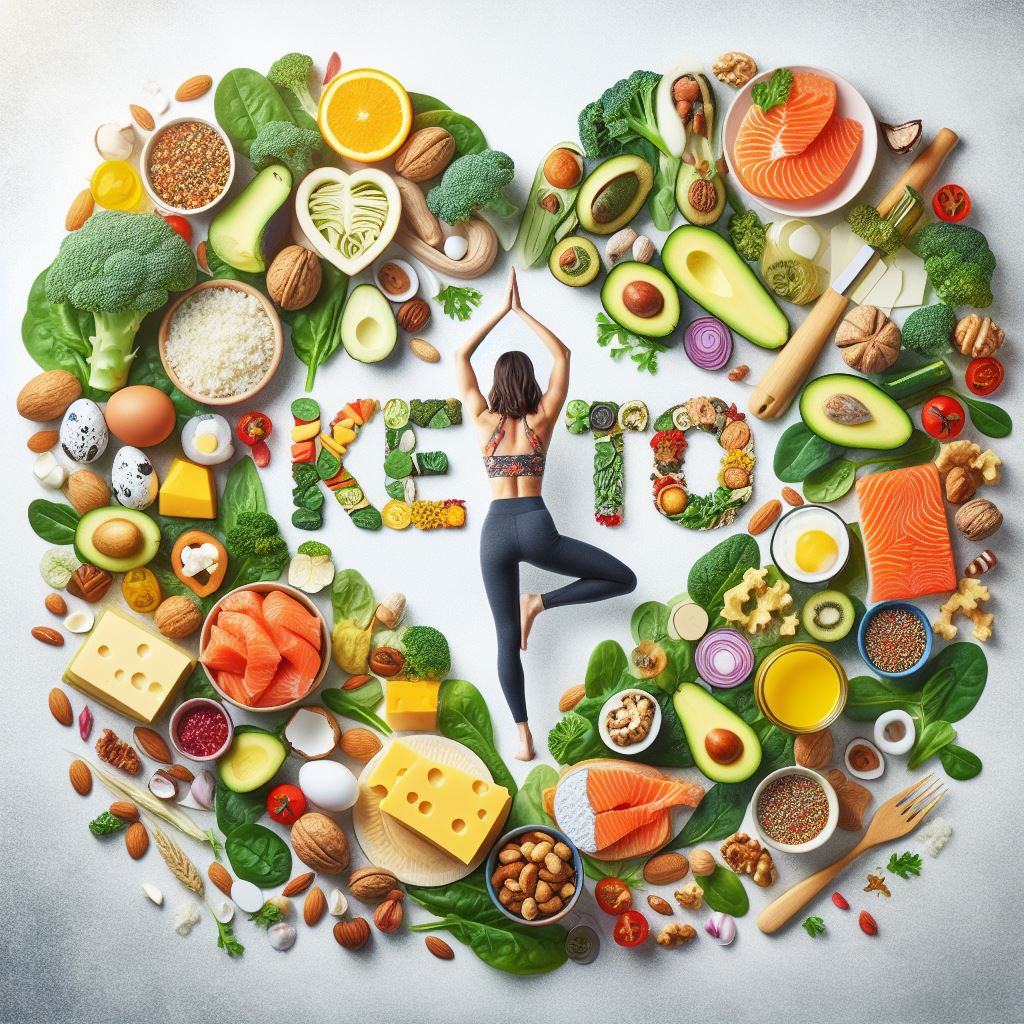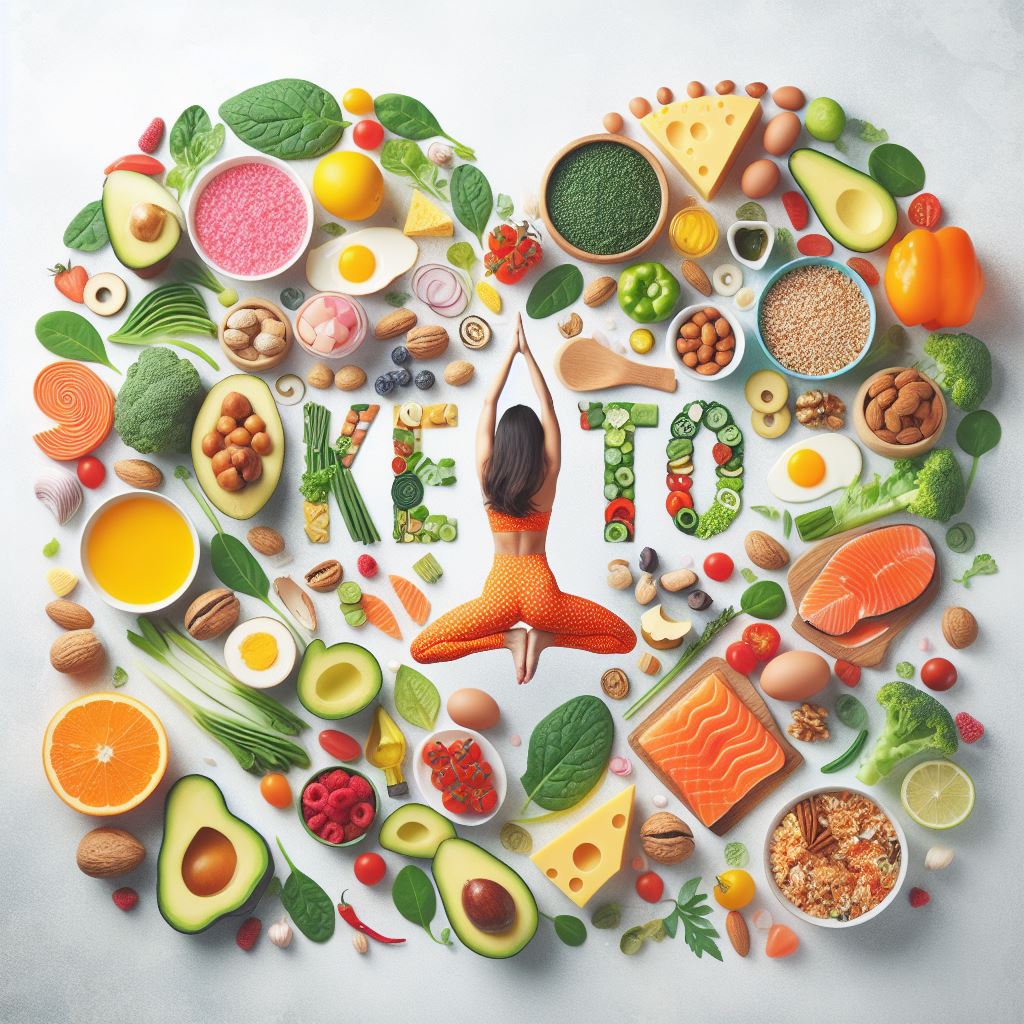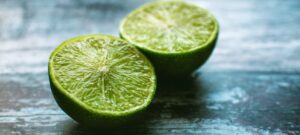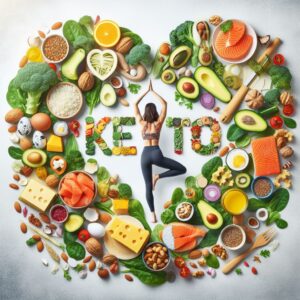In the dynamic landscape of nutrition and wellness, the ketogenic diet, or keto diet, has emerged as a force to be reckoned with. With its emphasis on low-carbohydrate, high-fat consumption, the keto diet plan has garnered attention for its potential to ignite weight loss, enhance mental clarity, and provide sustained energy.
In this in-depth guide, we’ll delve into the intricacies of the keto diet plan, offering you a roadmap to navigate the realms of ketosis. As you embark on this transformative journey, remember that knowledge is power, and understanding the nuances of the keto diet is key to unlocking its full potential.

Table of Contents
Understanding the Keto Diet Plan:
The Science Behind Ketosis:
At the core of the keto diet plan lies the science of ketosis. By significantly reducing carbohydrate intake, the body shifts its primary energy source from glucose to fat. This metabolic state prompts the liver to produce ketones from fat stores, setting the stage for efficient fat burning.
- Macronutrient Ratios:Achieving the optimal macronutrient balance is a cornerstone of the keto diet plan. Aim for approximately 70-75% of your daily calories from healthy fats, 20-25% from protein, and keep carbohydrates to a minimal 5-10%.
- Embracing Healthy Fats:Make friends with healthy fats such as avocados, olive oil, coconut oil, nuts, and seeds. These fats not only fuel your body but also contribute to overall well-being.
- Carbohydrate Consciousness:Carbohydrate restriction is pivotal to induce and maintain ketosis. Focus on low-carb vegetables and steer clear of high-carb culprits like grains, sugars, and starchy vegetables.
- Protein Moderation:Maintain a balanced protein intake to prevent muscle loss. Opt for quality sources like meat, fish, eggs, and dairy products.

Transitioning into the Keto Lifestyle:
Crafting Keto-Friendly Meals:
Meal planning is your ally when adopting the keto lifestyle. Build meals around low-carb vegetables, incorporate healthy fats, and ensure an adequate intake of moderate protein to meet your nutritional needs within your daily carbohydrate limit.
- Hydration Matters:Adequate water intake is crucial, especially during the initial stages of the keto diet. Hydration not only supports overall health but also compensates for water loss associated with reduced carbohydrate intake.
- Monitoring Ketosis:Keep tabs on your ketosis status using ketone strips or blood ketone meters. This proactive approach empowers you to make informed dietary adjustments and maintain an optimal macronutrient balance.
Potential Benefits of the Keto Diet:
Beyond Weight Loss:
While weight loss is a primary goal of the keto diet, its benefits extend far beyond shedding pounds.
- Enhanced Energy and Mental Clarity:Many individuals report heightened energy levels and improved mental clarity on the keto diet. Stable blood sugar levels and ketones as an energy source contribute to sustained focus and vitality.
- Blood Sugar Management:The keto diet may offer advantages for those with insulin resistance or type 2 diabetes by aiding in blood sugar control.
The Importance of a Personalized Approach:
While the keto diet boasts numerous benefits, it’s crucial to recognize that one size does not fit all. Each body is unique, and factors such as health status, activity level, and individual goals should influence how the keto diet is tailored.
Below is a sample table for a daily keto diet plan for a week. Keep in mind that individual nutritional needs may vary, and it’s advisable to consult with a healthcare professional or a registered dietitian for personalized advice. The calorie counts are approximate and can vary based on specific brands and preparation methods.
| Day | Breakfast | Lunch | Dinner | Snacks | Calories (Approx.) |
|---|---|---|---|---|---|
| 1 | Scrambled eggs with spinach and feta cheese cooked in olive oil | Grilled chicken Caesar salad with bacon, parmesan, and low-carb dressing | Baked salmon with asparagus and butter | Handful of almonds | 1500 |
| 2 | Keto-friendly smoothie with avocado, unsweetened almond milk, and protein powder | Cobb salad with turkey, avocado, blue cheese, and ranch dressing | Beef stir-fry with broccoli, bell peppers, and cauliflower rice | Cheese cubes with cherry tomatoes | 1600 |
| 3 | Omelette with mushrooms, cheese, and avocado | Zucchini noodles with pesto sauce and grilled shrimp | Grilled steak with roasted Brussels sprouts | Greek yogurt with a sprinkle of chia seeds | 1400 |
| 4 | Chia seed pudding made with coconut milk, topped with berries | Egg salad lettuce wraps with mayonnaise | Baked chicken thighs with green beans | Celery sticks with cream cheese | 1550 |
| 5 | Keto-friendly pancakes made with almond flour and topped with butter | Spinach and feta stuffed chicken breast with a side of sautéed spinach | Pork chops with creamy mustard sauce and cauliflower mash | Avocado slices with salt and pepper | 1700 |
| 6 | Greek yogurt parfait with nuts and seeds | Tuna salad with avocado and olive oil dressing | Shrimp scampi with zucchini noodles | Cucumber slices with guacamole | 1450 |
| 7 | Bulletproof coffee (coffee blended with butter and MCT oil) | Caprese salad with mozzarella, tomatoes, and basil | Lamb chops with rosemary and garlic, served with a side of steamed broccoli | Hard-boiled eggs with salt | 1650 |
Note: Adjust portion sizes and calorie counts based on individual needs and goals. It’s crucial to stay hydrated throughout the day by drinking water or other keto-friendly beverages.
This sample table provides a variety of keto-friendly meals, incorporating a balance of healthy fats, moderate protein, and low-carb vegetables. Remember to customize the plan based on your preferences and dietary requirements.
If someone cannot or does not want to follow a ketogenic diet, there are various alternative diet plans that can still promote health and well-being. It’s essential to choose a diet that aligns with individual preferences, health goals, and any specific dietary restrictions. Here’s an example of a balanced and well-rounded alternative diet plan:
| Day | Breakfast | Lunch | Dinner | Snacks |
|---|---|---|---|---|
| 1 | Greek yogurt parfait with berries, granola, and honey | Grilled chicken salad with mixed greens and balsamic vinaigrette | Baked salmon with quinoa, and steamed broccoli | Apple slices with almond butter or mixed nuts |
| 2 | Whole-grain toast with avocado and poached eggs | Mediterranean quinoa salad with olives, feta, and lemon-olive oil dressing | Grilled shrimp skewers with roasted sweet potatoes and spinach | Hummus with carrot and cucumber sticks |
| 3 | Smoothie with almond milk, banana, spinach, and plant-based protein powder | Chickpea and vegetable stir-fry with brown rice | Lentil soup with mixed green salad | Fresh fruit salad or roasted chickpeas |
| 4 | Oatmeal with strawberries, chia seeds, and Greek yogurt | Quinoa and black bean bowl with salsa, avocado, and cheese | Grilled turkey burgers with sweet potato fries and green beans | Cottage cheese with pineapple or trail mix |
| 5 | Scrambled eggs with sautéed spinach and whole-grain toast | Turkey and vegetable wrap with whole-grain tortilla | Baked chicken breast with quinoa and roasted Brussels sprouts | Edamame or cheese with whole-grain crackers |
Note: Adjust portion sizes based on individual needs and dietary goals. These are general meal ideas, and it’s important to consider personal preferences and any specific dietary restrictions.





